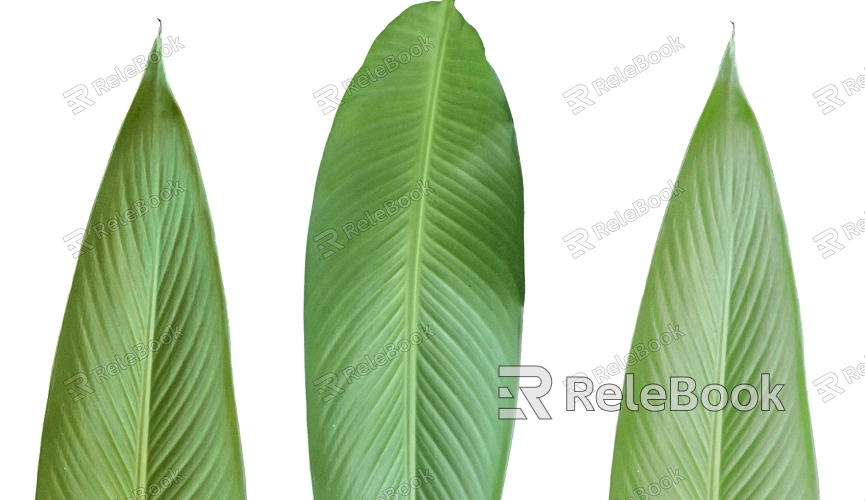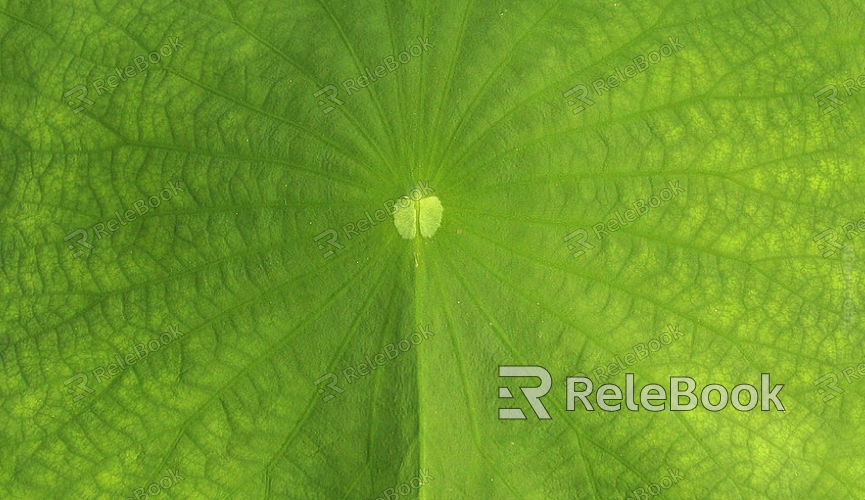How to Create Grass Blade Texture for 3D Modeling
In game scenes, animated movies, or virtual environment design, the appearance of grass blade textures plays a crucial role in enhancing the realism and detail of the final output. The surface of grass blades is complex, featuring fine textures, color variations, and dynamic effects. So, how do you create a realistic grass blade texture? This article will walk you through the process of creating a grass blade texture for 3D modeling and explore some common techniques and methods.

1. Application Scenarios and Tool Selection for Grass Blade Textures
Grass blade textures are widely used in several types of projects, including:
Game Design: Textures for grass in fields, outdoor areas, and forests are essential for creating realistic natural landscapes.
Film and Animation: When constructing real-world scenes, grass blade textures are a key element in large-scale environmental modeling.
Architecture and Interior Design: Grass textures are also crucial for creating lawns and garden effects in exterior design.
Choosing the right 3D modeling software is critical when creating grass textures. Commonly used software includes Blender, 3ds Max, Maya, and Cinema 4D. Each offers different texture creation and rendering tools. Designers should choose the software based on their comfort level and the needs of the project. This article will focus on Blender, but the concepts apply to other tools as well.
2. Preparation: Observation and Reference Material Collection
Before you start creating the texture, it’s important to observe the surface characteristics of grass blades carefully. Grass has features such as long shapes, vein patterns, and natural color gradients. To ensure the texture is realistic, you can gather reference materials in the following ways:
High-Quality Photos: Take high-definition photos of real grass blades, focusing on details such as the shape of the veins and small bumps or irregularities on the surface.
Online Image Search: Find professional grass blade texture libraries online and select suitable textures for reference.
If you find gathering high-quality 3D grass textures too time-consuming or don’t know where to start, you can directly visit Relebook and download beautiful 3D texture resources from https://textures.relebook.com/.
3. Modeling the Grass Blade Surface
Modeling the grass blade is the foundation for creating the texture. In this process, the first step is to create the basic shape of the grass blade. In Blender, common modeling methods include:
Creating the Grass Shape: Start by using the plane (Plane) modeling tool. Stretch, subdivide, and adjust the shape to match the appearance of a grass blade.
Adding Details: Adjust the edges of the model to introduce some curvature and natural forms. For more natural-looking grass, you can add some irregularities in the model.
After completing the basic modeling, the overall structure of the grass blade is in place, and you can move on to adding textures.
4. Creating the Basic Grass Blade Texture
The surface texture of grass typically includes color, detail, and glossiness. In Blender, the steps to create a basic texture include:
Base Color Texture: Add a basic green texture to the grass blade model. Choose a color tone suitable for grass and create a natural color gradient to simulate the color variation of real grass blades.
UV Unwrapping: Use UV unwrapping to accurately map the texture to the surface of the grass blade, ensuring the texture is not stretched or distorted.
Detail Mapping: Apply additional detail textures (e.g., veins, dirt spots, dry patches) to enhance the natural effect of the grass surface.

5. Adding Details: Veins, Bumps, and Normal Maps
The surface of grass blades is not perfectly smooth; in fact, there are many tiny details, such as veins and bumps. To achieve this in 3D modeling, you can use normal maps or displacement maps:
Normal Maps: Normal maps simulate small surface irregularities on the grass blades, giving them a more three-dimensional appearance. By extracting vein details from photos or directly painting the normal map in Blender, you can significantly enhance the realism of the grass texture.
Displacement Maps: Displacement maps go a step further by altering the geometry of the grass surface, making the texture details more pronounced. By adjusting the displacement intensity, you can make the surface of the grass blade more dynamic and lifelike.
6. Refining Glossiness and Reflection Effects
Grass blades often have some level of glossiness, especially after rain or when they are wet. In Blender, you can adjust the glossiness and reflection effects as follows:
Reflection Maps: Apply reflection maps to the surface of the grass blades to simulate wetness or the presence of water droplets, causing the surface to reflect the surrounding environment.
Roughness Adjustment: Some parts of the grass might appear rougher than others. By adjusting the roughness parameter, you can simulate this uneven glossiness. A lower roughness value will make the surface smoother, while a higher roughness value will make it appear rougher and more textured.
7. Rendering and Debugging
Once you’ve completed the grass blade texture, rendering and debugging are crucial steps. In Blender, you can use the Cycles or Eevee render engines to test your texture. Adjust lighting, shadows, and reflection settings to see how the grass blade texture performs under different lighting conditions, and make any necessary optimizations.
8. Applying and Exporting the Texture
When the grass blade texture is complete, you can apply it to a full grass field model or in a larger environment scene. When exporting, make sure the texture resolution fits the project’s needs, and select the appropriate file format (e.g., PNG or TGA). Additionally, optimize the file size for better efficiency in real-time applications.
By following these steps, you can successfully create a realistic 3D grass blade texture. This texture will have wide applications in environmental modeling and will bring more lifelike effects to games, animations, and other projects. If you’re looking for high-quality 3D textures, SketchUp models, or 3ds Max resources to build models and virtual scenes, Relebook offers a wide selection to help you achieve outstanding visual effects in your projects.

